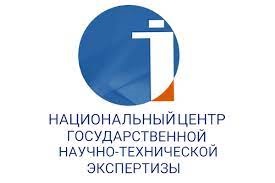The interrelation of neurolinguistics and communicative linguistics: methodological and methodical foundations
https://doi.org/10.55491/2411-6076-2025-1-106-124
Abstract
In modern linguistics, the study of cognitive and pragmatic aspects of linguistic activity is a relevant research area. Neurolinguistics examines the role of the brain in shaping speech activity and the impact of cognitive mechanisms on linguistic structures. Communicative linguistics, in turn, considers language as a means of communication, analyzing the pragmatic, discursive, and socio-psychological aspects of speech acts. The integration of these two fields contributes to the development of new methodological and methodical approaches in linguistics.
The aim of the study is to identify the interrelation between neurolinguistics and communicative linguistics, compare their theoretical and methodological foundations, and describe the influence of cognitive mechanisms on speech activity.
In line with this objective, the research examines the cognitive processing of linguistic structures and the features of neurolinguistic and communicative-pragmatic processes. The theoretical significance of the study lies in the systematization of cognitive and neuropsychological mechanisms of linguistic activity, providing a deeper understanding of the relationship between neurolinguistics and communicative linguistics. The practical significance is in enhancing language teaching methodologies, integrating cognitive and neuropsychological approaches, analyzing the pragmatic structure of speech acts, and optimizing linguistic communication. The research employs theoretical analysis, comparative methods, discourse analysis, cognitive modeling, and content analysis. These methods enabled a comparative examination of linguistic communication across different scientific frameworks, viewing neurolinguistic and communicative factors as a unified system. The results indicate that neurolinguistics and communicative linguistics are complementary research domains. Cognitive mechanisms and pragmatic factors play a crucial role in shaping speech activity. It is demonstrated that linguistic information processing and the structure of speech behavior are regulated by cognitive processes. Furthermore, the cognitive foundations of speech act interpretation and pragmatic meanings have been clarified. This study offers a comprehensive perspective on linguistic communication through the integration of neurolinguistics and communicative linguistics. The findings contribute to the development of new scientific approaches in cognitive linguistics and the refinement of language teaching methodologies. The research findings can be applied in language teaching methodologies, the development of speech skills, and the optimization of linguistic communication. The combination of neurolinguistic and communicative-pragmatic approaches will facilitate the design of effective language acquisition strategies.
About the Author
F. OrazbayevaKazakhstan
Fauziya Orazbayeva, Academician of the NAS of the RK, Doctor of Pedagogical Sciences, Professor
Almaty
References
1. Abai (Ibrahim) Qunanbaiuly. (2005) Shygarmalar zhinagy. Almaty: Zhazushy. [Abai (Ibrahim) Kunanbaiuly. (2005) Collection of works. Almaty: Zhazushy.] (in Kazakh)
2. Aimauytov, Zh. (2018) Psihologija. Almaty: Gylym. [Aimauytov, Zh. (2018) Psychology. Almaty: Gylym.] (in Kazakh)
3. Austin, J.L. (1975) How to Do Things with Words. Oxford: Oxford University Press. (in English)
4. Baitursynuly, A. (2015) Til – qural. Almaty: Arys [Baitursynuly A. (2015) Language is a tool. Almaty: Arys.] (in Kazakh)
5. Baiyrqyzy, L. (2019) Qazaq tilindegi pragmatikalyq zertteuler. Almaty: QazUU. [Baiyrkyzy, L. (2019) Pragmatic studies in the Kazakh language. Almaty: KazSU.] (in Kazakh)
6. Chomsky, N. (2015) Aspects of the Theory of Syntax. Cambridge, MA: MIT Press. (in English)
7. Devlin, J.T., & Watkins, K.E. (2007) Stimulating Language: Insights from TMS. Brain, 130(3). P. 610-622. (in English)
8. Dulatov, M. (2013) Ojan, qazaq! Almaty: Qazaq universiteti. [Dulatov, M. (2013) Wake up, Kazakh! Almaty: Kazakh University.] (in Kazakh)
9. Fillmore, C.J. (1976) Frame Semantics and the Nature of Language. Annals of the New York Academy of Sciences, 280, P. 203-222. (in English)
10. Friederici, A.D. (2011) The Brain Basis of Language Processing. Annual Review of Neuroscience, 34. P. 385-406. (in English)
11. Gazzaniga, M.S., Ivry, R., & Mangun, G.R. (2018) Cognitive Neuroscience: The Biology of the Mind (5<sup>th</sup> ed.). New York: W. W. Norton & Company (in English)
12. Grice, H.P. (1989) Logic and Conversation. In Studies in the Way of Words (P. 22-40). Cambridge, MA: Harvard University Press. (in English)
13. Hagoort, P. (2005) On Broca, Brain, and Binding. Trends in Cognitive Sciences, 9(9). P. 416-423. (in English)
14. Jackendoff, R. (2002) Foundations of Language: Brain, Meaning, Grammar, Evolution. Oxford: Oxford University Press. (in English)
15. Just, M.A., Carpenter, P.A., Keller, T.A., Eddy, W.F., & Thulborn, K.R. (1996) Brain Activation Modulated by Sentence Comprehension. Science, 274(5284). P. 114-116. (in English)
16. Lakoff, G., & Johnson, M. (2003) Metaphors We Live By. Chicago: University of Chicago Press. (in English)
17. Orazbaeva, F.Sh. (2015) Tildik qatynas: teoriyasy zhane adistemesi (2-basylym). Almaty: Arys. [Orazbayeva, F. Sh. (2015) Language communication: theory and methodology (2nd edition). Almaty: Arys.] (in Kazakh)
18. Pinker, S. (2007) The Language Instinct: How the Mind Creates Language. New York: Harper Perennial Modern Classics. (in English)
19. Qaidar, A.T. (2014) Qazaq tilining jetimologijalyq sozdigi (2-basylym). Almaty: Arys. [Kaidar, A.T. (2014) Etymological Dictionary of the Kazakh language (2<sup>nd</sup> edition). Almaty: Arys.] (in Kazakh)
20. Qaliev, G. (2012) Qazaq tilining pragmatikasy (2-basylym). Almaty: Raritet. [Kaliyev, G. (2012) Pragmatics of the Kazakh language (2<sup>nd</sup> edition). Almaty: Raritet.] (in Kazakh)
21. Qudaiberdiuly, Sh. (1911) Ush anyq. Almaty: Qazaqparat. [Kudaiberdiuly, Sh. (1911). Three truths. Almaty: Kazakparat.] (in Kazakh)
22. Tomasello, M. (2003) Constructing a Language: A Usage-Based Theory of Language Acquisition. Cambridge, MA: Harvard University Press. (in English)
23. Van Dijk, T.A. (1997) Discourse as Structure and Process. London: Sage. (in English)
24. Weiss, S., & Mueller, H.M. (2012) The Contribution of EEG Coherence to the Investigation of Language. Brain and Language, 121(2). P. 111-125. (in English)
25. Zhubanov, Q. (2010) Qazaq tili zhonindegi zertteuler (2-basylym). Almaty: Arys. [Zhubanov, K. (2010) Research on the Kazakh language (2<sup>nd</sup> edition). Almaty: Arys.] (in Kazakh)
26. Zhumabaev, M. (1992) Pedagogika. Almaty: Ana tili. 160 в. [Zhumabayev, M. (1992) Pedagogy. Almaty: Ana tili. 160 p.] (in Kazakh)
Review
For citations:
Orazbayeva F. The interrelation of neurolinguistics and communicative linguistics: methodological and methodical foundations. Tiltanym. 2025;97(1):106-124. (In Kazakh) https://doi.org/10.55491/2411-6076-2025-1-106-124

















